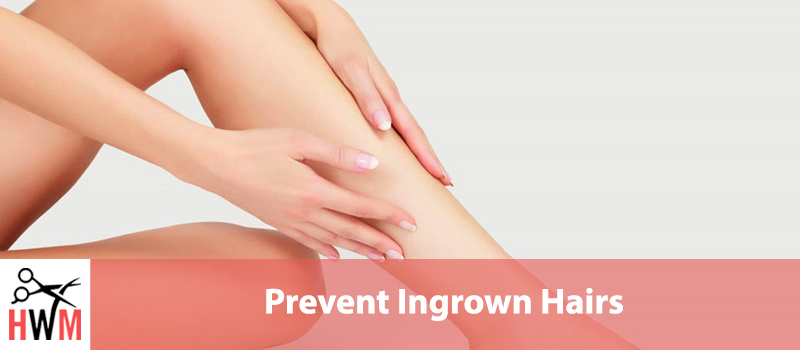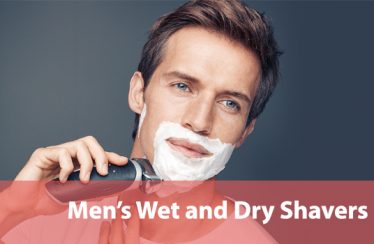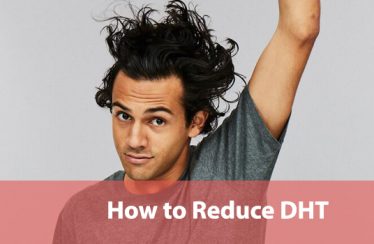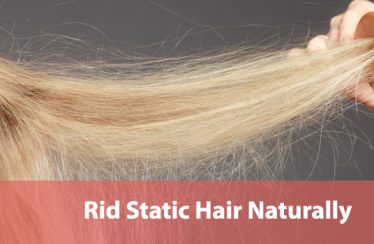Ingrown hairs are extremely common. Pretty much everyone gets ingrown hairs once in a while.
Almost all hair on your body can become ingrown, although areas you shave or use another method of hair removal (yes, even waxing) is more likely to develop ingrown hairs.
Regardless of where they appear, all those irritating little red bumps can be more than uncomfortable, leaving your skin sensitive or even actively upset. Those bumps are also embarrassing, so often mimicking the look of acne, except that ingrown hairs can get bigger and more irritated and unsightly than your average zit.
Fortunately, while incredibly common, ingrown hairs are also highly preventable. In this guide, we’re going to talk mostly about ingrown hairs from your facial hair, but the principles we’re talking about apply to body hair as well.
Let’s get started!
What Are Ingrown Hairs?
In general, ingrown hairs are the result of hair growing in improperly. They are most common after you use some kind of mechanical hair removal method like shaving or waxing.
You can get ingrown hairs without hair removal, however, especially if you tend to have coarse or curly hair.
There are two basic types of hair issues that we call ingrown hairs, true ingrown hair that cannot break through the skin, and hair that has curled back on itself and re-entered and irritated the skin.
Razor Bumps
Razor bumps are the common name for hair that has curled back on itself. You can’t always see the hair growing in with razor bumps, although if you go longer between shaving you might.
Razor bumps are usually smaller than true ingrown hairs, and easier to resolve. Often the hair will lift on its own as it grows, although not always.
Fortunately, razor bumps usually only affect the first couple layers of skin. The bumps are therefore less likely to scar, darken the skin, or leave other permanent marks of the irritation. They’re also less likely to get infected and are often less noticeable in general.
Another type of ingrown hair that falls under this category are hairs that grow under the first layer of skin but don’t cause irritation (at first). This type of ingrown hair is usually visible and appears to be lying very flat against your skin.
The easiest way to check for these is to run a finger over the hair and see if you can feel it, or if it moves. If the hair doesn’t move at all it’s probably growing under one layer of skin. These can usually be freed with mild exfoliation.
Ingrown Hairs
True ingrown hairs are less common than razor bumps. A true ingrown hair occurs when the hair cannot break through the skin as it grows. Sometimes they will resolve on their own as the hair grows longer and pressure builds, but it’s also common for the hair to curl around itself, increasing skin irritation as it does.
True ingrown hairs are usually bigger and more noticeable than razor bumps and often look more like pimples than razor bumps since white blood cells will collect in the irritated skin in an attempt to fight infection or dissolve the offending hair.
True ingrown hairs have another thing in common with zits, they are usually the result of clogged pores or a buildup of excess dead skin cells, either one of which can make it harder for the hair to break through your skin and grown normally.
This type of skin irritation is also more prone to infection since the level of irritation and damage is more severe. Trapped hairs are also more likely to permanently darken your skin or become infected.
In rare, particularly severe cases, true ingrown hairs should be drained by a doctor. You shouldn’t ever try to pop or squeeze an ingrown hair, but you can use warm compresses to try and lift the hair, and then tease it free with a pair of tweezers.
Prevention
From here on we’re going to refer to both types of ingrown hair simply as ingrown hairs. Fortunately, the same prevention methods will work regardless of which type of ingrown hair you get. It’s important to identify which type you have if you develop an ingrown hair but treating them is otherwise similar.
These tips and tricks will help you reduce the number of ingrown hairs you get to an absolute minimum, and will also help your skin look healthier and younger in the process.
Exfoliate
Exfoliating, at its most basic level, is just removing dead and dried skin cells. It can also help break down the glue that forms from your skin’s natural sebum, dead skin cells, and dirt and bacteria.
There are lots of options to exfoliate, but it’s important to get something designed for the skin on your face. Your face has thinner skin than most of the rest of your body, who while an exfoliating glove might work to remove excess skin from your legs, arms, and chest, the same tool would be too harsh for your face.
Getting the right product is important in part because the micro-abrasions and other irritations that can happen when you over-exfoliate can make issues like ingrown hairs and acne worse instead of helping.
The trick is to find the right balance between exfoliating enough for your skin and not exfoliating enough.
For your face, it’s a good idea to stick to a washcloth that is designed to help with exfoliating, or an exfoliating scrub. Try to avoid microbeads and other plastic-containing exfoliating scrubs. Not only are they not environmentally friendly (microplastics were recently found in the rain in Boulder, Colorado), they can be too harsh for some skin types.
You can also make scrubs at home, with salt, sugar, and/or coffee grounds in natural oil. Be careful though, coarse salt can be too much for sensitive skin, and sugar can encourage acne-causing bacteria if you’re already prone to breakouts.
There’s no perfect solution, but exfoliating is one of the most important things you can do to prevent ingrown hairs, so it’s worth experimenting to find the right method for you.
It’s also important, while you’re exfoliating, to use small circular motions across your whole face. The circular motions will make sure you lift hairs growing in any direction and will also help lift all the dirt and dry skin from your face evenly.
Cleanse & Moisturize
If cleansing and moisturizing your face is not already part of your routine, it should be.
Cleansing reduces the risk of bacteria irritating, even before you have an ingrown hair. It helps prevent the build-up of sebum and dry skin, which are the main precursors for ingrown hairs and acne.
Cleansing can also help prevent your skin from over-producing sebum, since the oil is one of the main defenses your skin has from outside irritation, and cleansing reduces the irritants on your skin.
Moisturizing further protects and repairs your skin, keeping it healthier and less prone to irritation. Not only will moisturizing help prevent ingrown hairs by preventing some of the situations that cause them, but it also improves the overall health of your skin and hair.
While there is less direct impact from cleansing and moisturizing on ingrown hairs than proper exfoliation, cleansing and moisturizing is more important in reducing the irritation and unsightly appearance of ingrown hairs on the rare occasion they do develop.
Moisturizing, in particular, can help heal scarring and prevent your skin from darkening from the occasional ingrown hair. Reducing the long-term damage to your skin helps with just about every skin condition that might arise.
Plus, both will help your skin look healthier and younger.
Shave with the Grain
In the interest of transparency, shaving with the grain of your facial hair isn’t possible for every man. If you’re lucky your hair will all grow in mostly the same direction or will have large patches that grow in the same direction even if that direction is different on different parts of your face.
If you are less lucky, you might have facial hair that grows in every direction and has no clear grain to follow. We’ll talk about what you can do if that sounds like your facial hair a little further down.
If you do have a clear grain to your facial hair it’s important that you shave with the grain rather than against it.
When you shave against the grain of your facial hair (or any hair) you’re increasing the friction from the razor, and pulling on the hair and the hair follicle, irritating your skin.
That extra friction pulls your hair in odd directions, increasing the likelihood that your hair will grow into the skin instead of out of it. It also cuts your hair at an odd angle, creating a sharp harsh edge, further increasing the chance of your hair growing improperly.
Shaving with the grain actively reduces the friction from the passing blade, leaving a smooth surface and much less irritation. You also tend to get a closer shave with fewer passes, further reducing irritation.
Use a Single Blade Razor
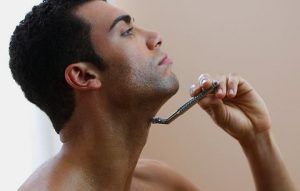
Speaking of reducing irritation, if you use a manual shaver instead of an electric shaver, stick to one very sharp blade as much as possible.
No matter how sharp or thin the blades in a compound razor may be, each additional blade still adds friction and irritation to each pass.
It’s also more difficult to keep a multi-blade razor clean, which can lead to the razor clogging or dulling more quickly, both of which will add even more friction on top of the friction of the blades.
Using a single blade, a safety razor or straight razor depending on which you are more comfortable or skilled with reduces the friction. Single blade razors are also easier to keep clean, keeping them sharp longer.
Since they are easier to clean and keep clean, it’s also less likely that a single blade razor will become a breeding ground for bacteria. Bacteria that are then introduced to your face and hair follicles.
It’s also easy to tell when a single blade razor has started to go dull and needs sharpening or replacement. Shaving with a dull blade not only increases the friction on your skin, but the blade can also cause micro-abrasions and tears instead of gliding smoothly over the skin without causing damage.
Reducing the damage from shaving prevents some of the irritations that make ingrown hairs more likely.
Use an Electric Shaver
If even a single blade shaver seems to be irritating, or you don’t have a clearly defined grain to your facial hair, electric shavers are a gentler option. High-quality shavers are designed specifically to protect your skin, although there are different types of shaver that work better for some people over others.
Foil Shavers
Foil shavers are generally considered the most gentle option, and the best option if you have sensitive skin or skin conditions that make shaving more challenging.
Foil shavers employ multiple cutting blades, each of which supplies several cutting motions a second. To avoid causing friction, pinching, micro-tears, or other abrasive damage to your skin, foil shavers first grab and lift individual hairs away from the skin so that the blades of the shaver never contact your skin.
Foil shavers still offer a fairly close shave, for all that your skin is protected from the blades. They typically can’t get quite as close as a single blade shaver, but certainly close enough to avoid 5 o’clock shadow.
They are also durable, often rechargeable, with easily replaceable foil heads so you don’t have to worry about trying to use a dull blade. There are many hypo-allergenic options on the market, which can also help avoid swelling and irritation that cause ingrown hairs.
Higher-end foil shavers will also provide sonic vibration or small electrical pulses to help relax your skin, open your pores, and lift your facial hair, all of which reduces friction.
Unfortunately, foil shavers aren’t a great option if you have very coarse hair since the foil might fail to pick up hairs, forcing you to take multiple passes.
Rotary Shavers
Rotary shavers are another electric option and are better suited to coarse hair. Rotary shavers are also the best option for men who have no clean grain in their hair since the circular motion of both the blades and the proper technique with this type of shaver doesn’t require any specific direction from your hair.
Rotary shavers do have close blade contact to your skin, but the higher end shavers of this type are designed with that extra contact in mind, sometimes offering frictionless comfort rings, sonic vibration, specific blade design, or all three in order to protect your skin.
Rotary shavers also offer a close shave, so you don’t need to worry about being too prickly.
However, because rotary shavers do have direct skin contact, they aren’t quite as sensitive skin-friendly as foil shavers. It’s more important, with rotary shavers, to invest in a high-quality product with easily replaceable blade heads.
General Shaving Tips
Try not to shave every day if you are prone to ingrown hairs and razor burn. Waiting, even every other day, will give your skin a chance to heal and recover from the extra irritation of shaving.
Shave with as few passes as possible. Every pass adds to the irritation you’re causing your skin and increases the likelihood that your hair will be pulled in odd directions, irritating your hair follicle and making it more likely your hair will grow into your skin.
Moisturize before and after you shave.
Use sunscreen, especially if you’re shaving your beard or mustache for the first time in a while.
Heat & Moisture are Your Friends
There’s a reason many men shave just after, or even in, their morning shower. Electric shavers, in particular, are great for shaving in the shower since most are waterproof, and they protect your skin against accidental slips and nicks.
The only disadvantage to shaving in the shower is that there isn’t a good way to see what you’re doing since few showers have a mirror and even the ones that do usually fog with water and steam.
But even if showering isn’t an option warmth and moisture relax your skin and lift your facial hair away from your skin, making it easier to get a close shave without irritating your skin.
Try a hot damp towel. Or, if you’re a fan of shaving creams, try and old-fashioned shaving cream bar in a thermal bowl, so you can heat the bowl and the shaving cream together.
You can also splash warm water on your face just before you shave or moisturize with warmed olive oil or coconut oil. The heat and moisture will be effective, regardless of the source.
Use Shaving Cream or Gel

If you are prone to ingrown hairs, whatever you do, don’t shave dry. Shaving creams and gels are particularly effective at softening your skin and hair and lifting your hair away from your skin.
Shaving creams are the slightly more common of the two, in part since the foaming action has benefits of its own, but shaving cream is only helpful when you want to remove all of your facial hair.
Old fashioned shaving soap bars are great, as we mentioned, since you can easily heat the lather of the shaving cream before applying it. However, even shaving cream from a can will soften and lift your facial hair.
Some commercial shaving creams are also formulated to reduce the amount of hair you grow over time, although they aren’t truly hair removal creams, and growing less hair also naturally means you get fewer ingrown hairs.
Shaving gels function in much the same way, and also sometimes have ingredients that can reduce hair growth over time, but their main benefit is that they are see-through.
Shaving gels let you easily and accurately preserve the facial hair you want to keep, maintaining a perfect goatee, sideburns, or mustache, while also letting you get a close and gentle shave to remove the hair you don’t want.
Post Shave Treatments
You should do some kind of post-shave treatment. The two general types of post-shave treatment are an after-shave or a moisturizing cream or oil.
Rather than directly preventing damage, like the other tips on this list, post-shave treatments soothe your skin and help provide what your skin needs to begin to heal from the inevitable irritation of shaving.
Letting your skin heal more quickly and easily works to prevent ingrown hairs by preventing the weaknesses and irritations from persisting while your facial hair grows. Since facial hair is slow-growing, much more so than the skin on your face, your skin can heal before the hair has a chance to grow in the wrong direction.
The protective moisture layer, which you add to when you use good after-shave or a moisturizing product, will also prevent hair from growing back into your skin, preventing the razor bumps and irritation from hair that escapes your skin only to grow back into it.
Give Your Skin a Break
The last thing you can do to prevent ingrown hairs is to give your hair a total break from shaving irritation. No, this doesn’t mean you need to go full No-Shave-November every other month, but giving your face the occasional couple-day break will help maintain your skin’s long-term health.
Of course, another option is to embrace your facial hair and grow out the facial hair in problem areas, but that is a matter of personal choice and fashion.
Conclusion
Ingrown hairs are a part of life. Even if you develop the perfect skincare routine for your skin and hair you’re still going to get the occasional ingrown hair.
Hopefully, this guide has given you the tools and tricks you need to take control of the situation, minimizing the ingrown hairs you get and healing them faster when they do crop up.
And remember, everyone gets ingrown hairs. Don’t worry about it if you have the occasional slight red bump or irritated patch of skin. When they happen take care to cleanse and moisturize your skin, use heat and moisture to coax the hair to the surface, and don’t worry about it too much.
